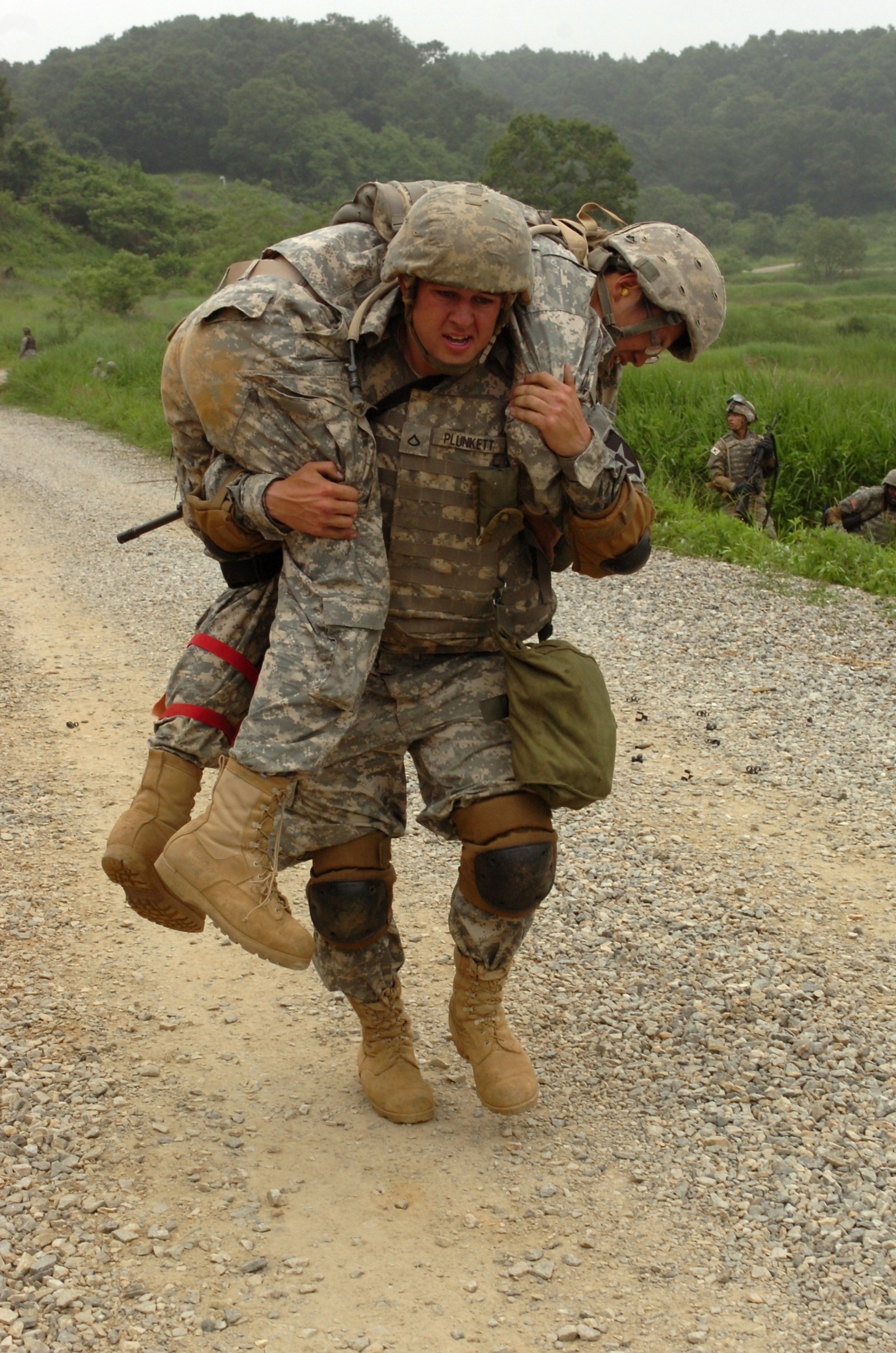It was not just practice as usual. The enemy force was stationary targets, but the rounds were anything but fake. Live ammunition made the stakes higher and the training all the more real.
Given the lethal force each weapon possessed, safety was the top priority. From the top down, the leaders emphasized the importance of safety to the Soldiers of Headquarters and Headquarters Battery, 210th Fires Brigade, 2nd Infantry Division.
"It just takes one - one person to have their weapon on semi," said 1st Sgt. Antonio Amaro, the HHB first sergeant and a native of Lawton, Okla. "This is good training. We're doing good stuff, but we do not need to have this end badly."
Far from a bad ending, the 48 Soldiers and KATUSAs who participated in the Convoy Live-Fire Exercise on Story Live Fire Complex completed the training, which was held June 8-13, incident free.
The mood changed when live rounds were introduced to the Soldiers, said Sgt. Rodolph Avalos, a vehicle commander and human resources specialist.
"As soon as they got live rounds, they started to get the picture," said the native of Santa Ana, Calif.
For some of the new Soldiers the training was an eye opener and sign of things to come. Pfc. James Purvis, a squad automatic weapon gunner and an intelligence analyst, said it was his first Convoy Live Fire Exercise.
"The training won't affect me here as much as when I get deployed to a war zone, such as Iraq," said the Houston native who has been a Soldier for one year and three months. "In a war-time scenario, this (training) will help me survive."
More than just shooting at targets, the training integrated firing live rounds with reacting to an ambush. The Soldiers fired from moving vehicles in a convoy before being ambushed by an Improvised Explosive Device (IED). Once the IED was detonated, the Soldiers reacted.
After dismounting their vehicles in teams, some of the Soldiers laid down suppressive fire. While the Soldiers reacted to the enemy's attack, the observer/controllers threw curve balls at the troops. Soldiers were deemed wounded or killed in action to add realism to the scenario. Vehicles became inoperable. Soldiers shared ammunition as needed. The battle drill continued until a Quick Reaction Force relieved the Soldiers and the exercise concluded.
Throughout the training the Soldiers had to react. A wounded comrade meant a stretcher. Inoperable vehicles required recovery. And defending the force was only possible through constant communication, cooperation and determination.
For the leaders, like Sgt. Jerome Norman, the convoy's commander, the exercise was an opportunity to practice troop leading procedures.
"I've been deployed before, but this was my first time leading," said the native of Tyler, Texas. "All Soldiers need the training because we are at war. We have to train our Soldiers to be ready or we fail them."
Norman said the measure of the training's success was the confidence of his Soldiers because the skills they forged in practice may be tested in battle one day.


Social Sharing